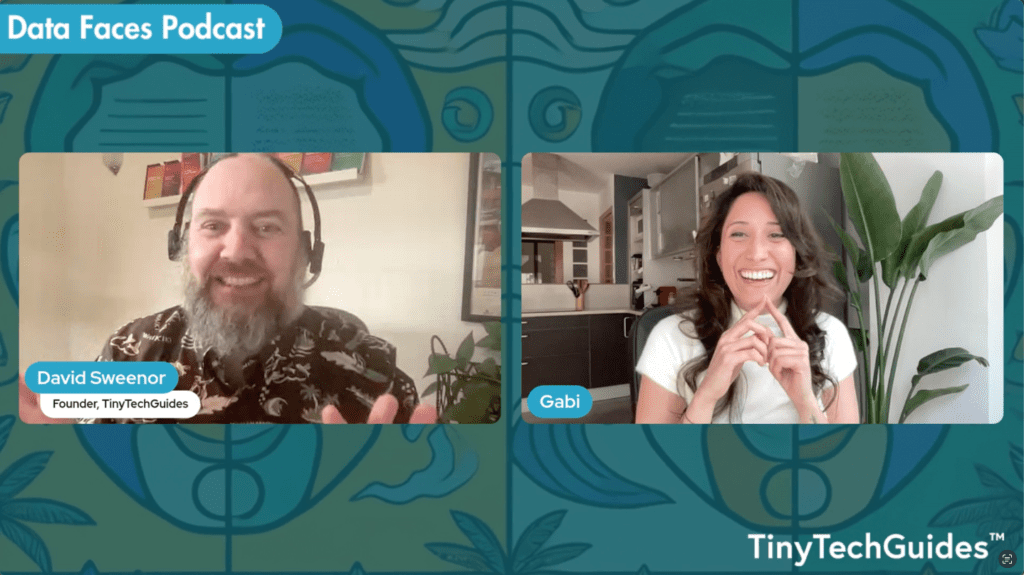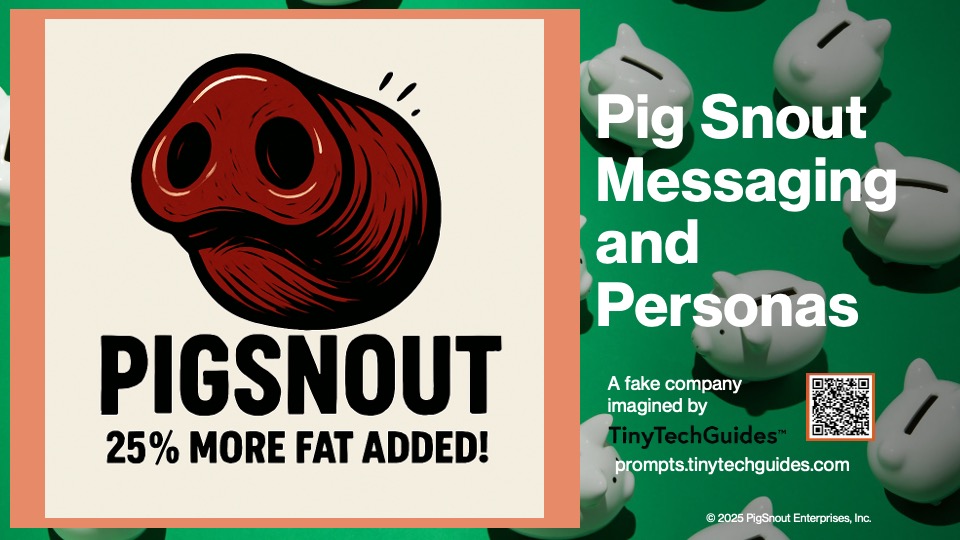A Product Marketer’s Guide to Avoiding AI Scheduling Mistakes

Note: this post originally appeared on prompts.tinytechguides.com, make sure you subscribe to get early access to the latest articles and prompts.
I caught my AI lying about dates.
Last month, I did a PSA for PMMs and called out how large language models are completely blind to messaging tables in PowerPoint slides. Today, I’m exposing another gotcha that’s making my (and your) job as a product marketer harder than it needs to be.
I was using my custom TinyTechGuidesGPT to help build a quarterly social media calendar. Things started well enough. It dutifully generated content themes, post types, and scheduling ideas across different channels, all organized in a neat table. Then I glanced at the massive wall calendar next to my desk and noticed something was off.
The AI had confidently created posts for “Tuesday, April 16th” and “Friday, April 24th.” One tiny problem for the TinyTechGuidesGPT—April 16, 2025 is actually a Wednesday, and April 24th isn’t a Friday at all. Looking closer, I realized about a third of the dates were flat-out wrong, with the accuracy getting worse the further we went into the future.
What looks like a time-saving tool almost became a big pain in my butt—with nearly a third of AI-generated dates misaligned with their actual days of the week.
Had I not caught this early on, I would’ve been stuck with a completely useless plan and hours of wasted work. My time-saving tool turned into a time-wasting headache.
The problem: Calendar confusion
At first, I blamed my own prompting skills when I noticed these date errors. I tried different approaches: specifying exact date formats, giving the current date as a reference point, even directly asking for day-of-week verification. Nothing fixed it.
The errors followed no clear pattern. The AI would create content for specific calendar dates with specific weekdays, but the actual alignment was just wrong. These weren’t random mistakes. Apparently, LLMs have a fundamental inability to match dates with their correct days of the week. I know they can’t do math (without Python), so I suppose I should have realized this as well.
The AI delivers a polished content calendar with no indication that it doesn’t understand the fundamental date-day relationships. Without independent verification, these errors remain invisible until they cause scheduling problems.
We’re all aware of LLMs’ propensity to make stuff up (aka confabulations or hallucinations), but without a keen eye, these errors may catch you off guard. The AI doesn’t flag uncertainties or suggest double-checking. Instead, it hands you a professional-looking calendar that seems perfect until you use your eyeballs and actually look at a real calendar.
When asked to create content for “Tuesday, April 16th,” the AI simply added the post to my calendar, completely oblivious that April 16, 2025, is actually a Wednesday. This problem continues to persist no matter how much I try to trick it into accuracy.
The science behind the struggle
This calendar problem highlights an inherent difference between how LLMs process information and how we think about time. These AI systems understand the language of dates without actually knowing anything about calendars.
I’ve mentioned this before and will repeat it here: LLMs are fancy auto-complete systems, not rule-following calculators. They’ve seen millions of examples of text mentioning “next Tuesday” or “April 16th,” but they don’t work from a structured understanding of how calendars actually function.
LLMs excel at understanding language about dates without grasping the logical structure that governs calendars—approaching calendar tasks through probabilistic language patterns rather than logical computation.
This is a big deal for product marketers. When I ask an AI to help craft messaging, I’m using its pattern recognition strengths. But when I ask it to figure out that April 16, 2025 is a Wednesday, I’m asking it to do calendar math—a task it approaches through language patterns instead of actual calculations.
The system doesn’t actually “know” that months have specific numbers of days or that leap years follow set patterns. It doesn’t understand that Tuesday always follows Monday. It just predicts what text should follow other text based on patterns it learned during training.
This limitation isn’t about complex calculations. Even basic day-of-week matching is a challenge because calendars require precise rule application, not fuzzy pattern matching.
Why this matters for product marketing
With all of the dependencies and teams PMMs need to coordinate with, having an accurate calendar should be the last thing we need to worry about. We live in a world where timing determines whether a campaign succeeds or flops. When your product launch needs coordinated activity across channels, even small timing errors can create massive problems.
Product announcements with incorrect timing confuse your market. You certainly don’t want to end up with an “oops”, where a calendar error leads to announcing a feature three days before it was actually available.
Unchecked calendar errors will ripple throughout an organization, undermining credibility with both customers and cross-functional stakeholders.
Promotional activities tied to events or holidays need perfect timing. An email referencing “the Monday after Thanksgiving” needs to hit inboxes on the right date, especially for time-sensitive offers. When your planning document gets “Cyber Monday” wrong, your entire promotional strategy is shot before you even start.
These errors also damage your credibility with cross-functional partners. A content calendar with incorrect day-of-week alignments makes you look sloppy. Marketing serves as the coordination point for go-to-market activities, so calendar errors don’t just hurt your team—they’ll permeate through the entire organization, affecting product, sales, and customer success teams all at once.
The irony is brutal. We use AI tools to be more productive, but calendar errors create extra verification work and potential rework. Those supposed time savings vanish when you discover misaligned dates late in the planning process, forcing rushed fixes under pressure.
Practical solutions for PMMs
The calendar challenge with LLMs means you need clear boundaries and verification steps in your workflow.
Know when to use what
Set clear roles for your different tools. Use AI assistants for content creation, messaging frameworks, and creative ideas. These tasks play to the strengths of LLMs where they actually add value.
Keep all calendar planning, scheduling, and timing-specific tasks in dedicated tools built for temporal accuracy. I use Buffer for my scheduling.
The same way you wouldn’t use a spreadsheet to write a blog, don’t use an LLM to determine calendar dates. Just because you have a hammer, doesn’t mean everything is a nail. Pick the right tool for each job.
The handoff between these systems impacts your workflow. Generate content categories and themes with AI help, then manually assign them to specific dates using purpose-built calendar tools. This clean separation keeps the creative benefits while ensuring your dates actually make sense.
Essential verification practices
When working with any AI-generated content that mentions dates, make verification standard practice. Keep a reference calendar open during planning sessions and cross-check every date-day pairing before finalizing anything.
Pay special attention to campaign launch dates that coordinate multiple elements across channels. These are high-value, high-risk moments where calendar accuracy directly impacts market perception.
Content that builds sequentially over time needs to be watched. The narrative flow of a multi-week campaign can break completely if intermediate posts appear on wrong days.
Seasonal or holiday-timed messaging demands extra scrutiny. Marketing that references specific seasonal moments becomes irrelevant when off by even a single day.
Smarter prompting techniques
While verification remains necessary, you can improve AI output through better prompts and letting AI know what date and day it is when you’re working with it.
Pro tips:
- Request standardized formats: “Use YYYY-MM-DD format for all dates.”
- Provide clear anchoring: “Today is Friday, April 4, 2025. Create content for next Tuesday.”
These approaches won’t fix everything, but they reduce errors by giving the AI more structure to work with.
The integrated workflow
My most effective approach combines these elements:
- Generate content themes and concepts with AI assistance
- Manually transfer these ideas to dedicated scheduling tools
- Use real calendar applications for all temporal planning
This hybrid approach maintains the creative advantages of AI while ensuring your campaigns execute with proper timing.
Moving forward: use the right tool for the right job
The calendar blind spot in LLMs is a specific yet consequential limitation for product marketers. It illustrates a broader principle about technology adoption: understanding the limits of our tools determines whether they help or hurt our work.
My key takeaway is to use the right tool for the right job. The same LLM that fails at calendar accuracy can transform your messaging development, audience targeting, and content variation. The key is knowing where these systems shine and where they stumble.
By establishing clear workflow boundaries—using LLMs for content creation while keeping calendar functions in dedicated tools—you create a system that leverages strengths while avoiding pitfalls.
Understanding the boundary conditions of our tools determines whether they enhance or hinder our effectiveness. The few moments spent verifying dates will save hours of potential rework.
The few minutes spent checking dates against a reliable calendar will save hours of potential rework and prevent the market confusion that follows misaligned communications. As we bring these powerful tools into our workflow, the distinction between what we delegate and what we verify becomes increasingly important. The product marketers who succeed will be those who develop this discernment, knowing when to trust AI capabilities and when to trust their own eyes.
I caught my AI lying about dates. Now I know better than to blindly trust it with my calendar.
Note: this post originally appeared on prompts.tinytechguides.com, make sure you subscribe to get early access to the latest articles and prompts.
About the Author
Books: Artificial Intelligence | Generative AI Business Applications | The Generative AI Practitioner’s Guide | The CIO’s Guide to Adopting Generative AI | Modern B2B Marketing | The PMM’s Prompt Playbook
Founder of TinyTechGuides, David Sweenor is a top 25 analytics thought leader and influencer, international speaker, and acclaimed author with several patents. He is a marketing leader, analytics practitioner, and specialist in the business application of AI, ML, data science, IoT, and business intelligence.
With over 25 years of hands-on business analytics experience, Sweenor has supported organizations including Alation, Alteryx, TIBCO, SAS, IBM, Dell, and Quest, in advanced analytic roles.Follow David on Twitter @DavidSweenor and connect with him on LinkedIn https://www.linkedin.com/in/davidsweenor/.



